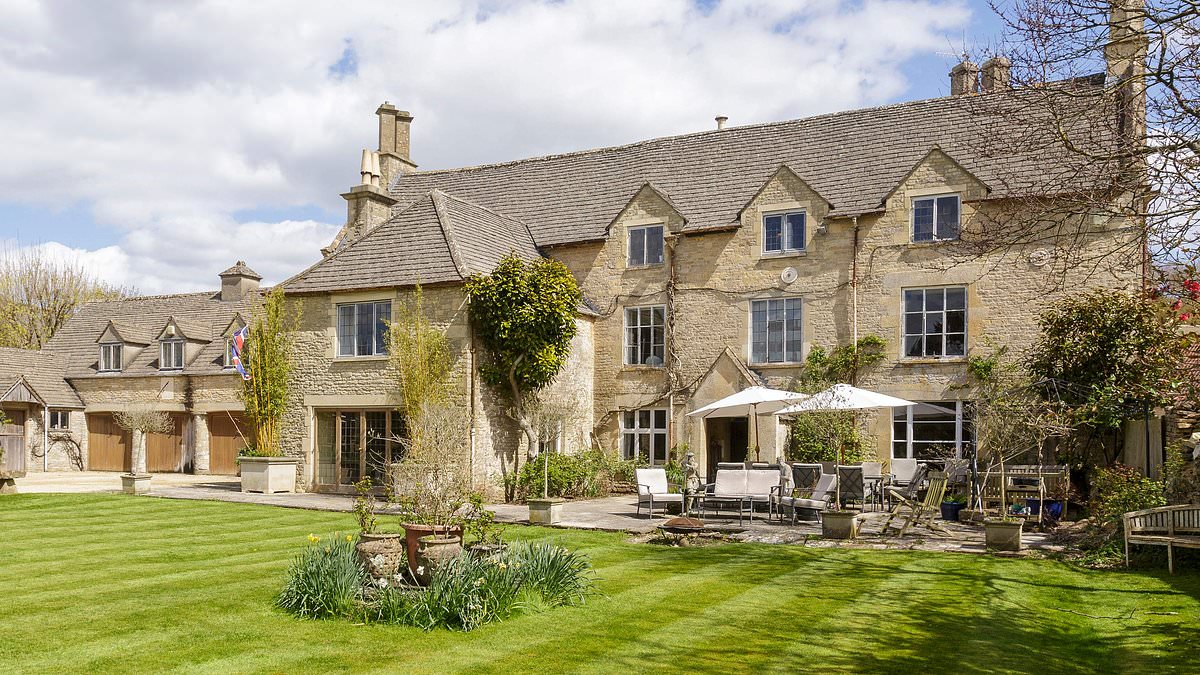A charming six-bedroom manor believed to have been a refuge for King Charles II during his escape from the Civil War has hit the market for £3.25million.
Behind the doors of the stunning 500-year-old property steeped in rich history is a beautiful drawing room, dining hall and impressive limed oak panelled master suite complimenting the reception rooms.
Located in Gloucestershire, the magnificent home is nestled on 2.08 acres and has been owned by the same family for the past 40 years.
Known as The Old Manor House in the Cotswolds, this property is believed to be where King Charles II sought refuge on the night of September 11, 1651, following his defeat at the Battle of Worcester.
The Old Manor House (pictured) in Gloucestershire, UK, has hit the market for £3.25million and is thought to be a refuge for King Charles II during his escape from the Civil War
The stunning 500-year-old property is steeped in rich history and has been owned by the same family for the past 40 years but has been well maintained
Inside there’s a stunning living room (pictured) and a drawing room complete with a fireplace – one of the biggest fireplaces in the Cotswolds
All aspects of the home will make you feel as if you’re living like a royal (bathroom pictured)
The quaint kitchen features beams on the ceiling, white cabinets and blue walls
King Charles II (pictured) was the oldest surviving child of Charles I
It belonged to John George, who was MP for Cirencester at the time of the Civil War from 1626 until 1629.
He was initially a Parliamentarian, but when his life was spared by the Royalists upon capture, he converted to the Royalist cause.
It is believed that he harboured King Charles II at The Old Manor House on the night of 11th September 1651 during his retreat from the Battle of Worcester.
The original building dates back to the mid-16th century, but today The Old Manor House is a wonderful family home.
The home belonged to John George, who was MP for Cirencester at the time of the Civil War from 1626 until 1629. He was initially a Parliamentarian, but when his life was spared by the Royalists upon capture, he converted to the Royalist cause
It is believed that he harboured King Charles II at The Old Manor House on the night of 11th September 1651 during his retreat from the Battle of Worcester
The original building dates back to the mid-16th century, but today The Old Manor House is a wonderful family home
The property is also nestled on 2.08acres of land, perfect for a royal return to nature
It also offers upmost privacy with a gate and driveway at the edge of the property
The drawing room features one of the biggest fireplaces in the Cotswolds and the dining hall has a rare roll-moulded main beam and panelled ceiling joists.
The manor is truly an exceptional gem that would be a perfect family home with grand living and entertaining spaces, along with paddocks for animals to roam.
The property as a whole has an abundance of charm and character throughout with gorgeous royal features that capture the eye in every corner.
Property agent, Anthony Coaker said: ‘An edge of village house which is perfect for the growing family who want to enjoy the best of country life.’
